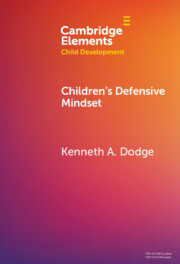Element contents
Children's Defensive Mindset
Published online by Cambridge University Press: 14 May 2024
Summary
- Type
- Element
- Information
- Series: Elements in Child DevelopmentOnline ISBN: 9781009416207Publisher: Cambridge University PressPrint publication: 06 June 2024

